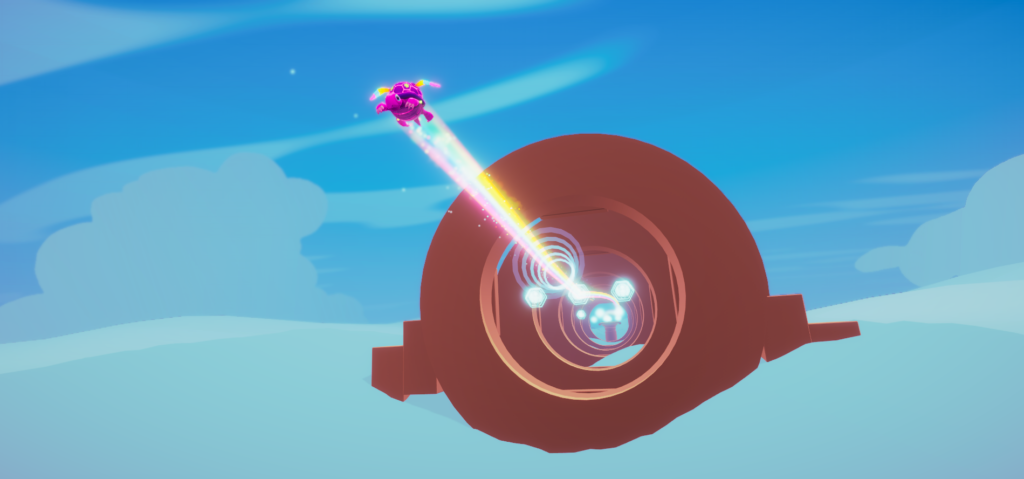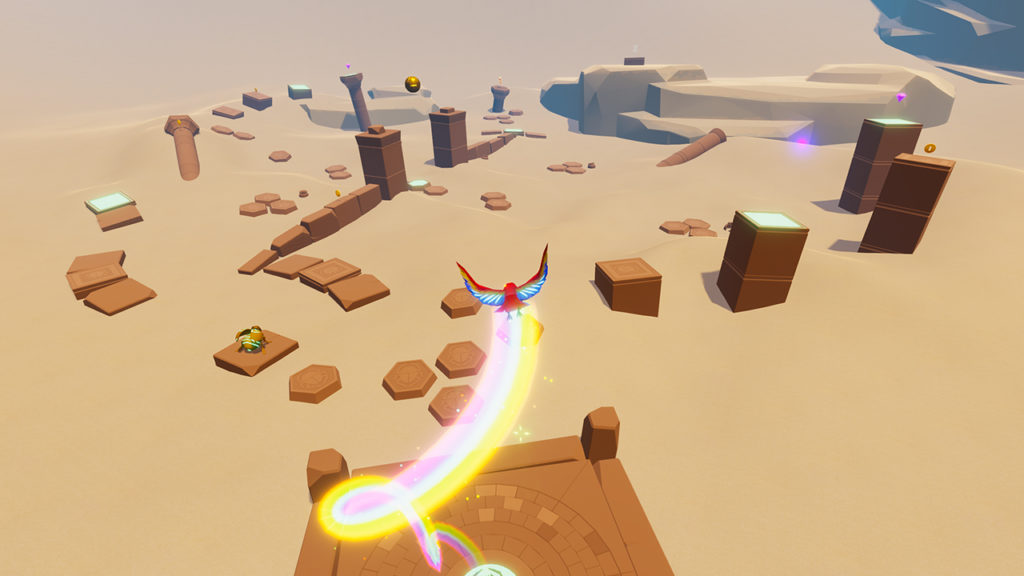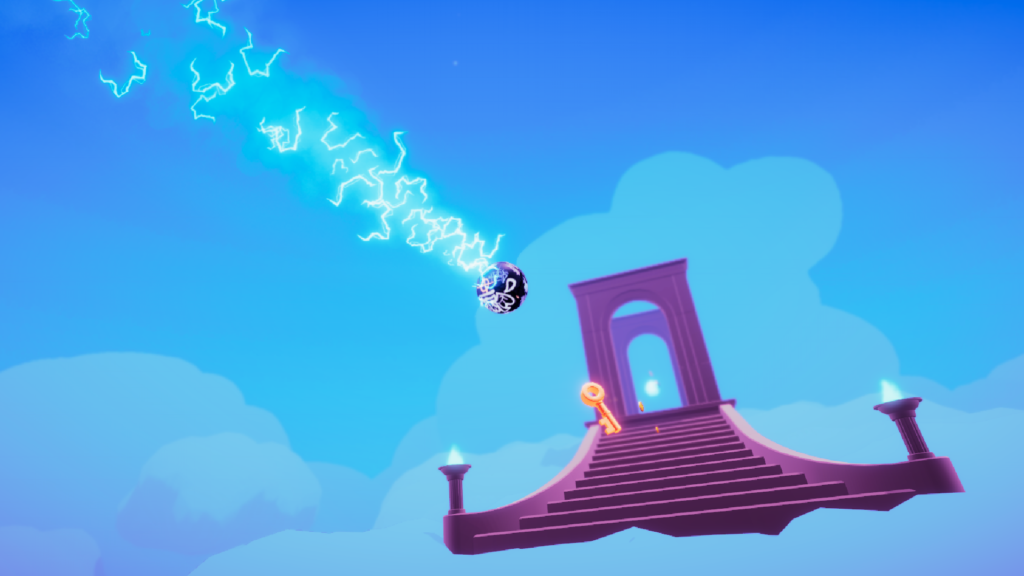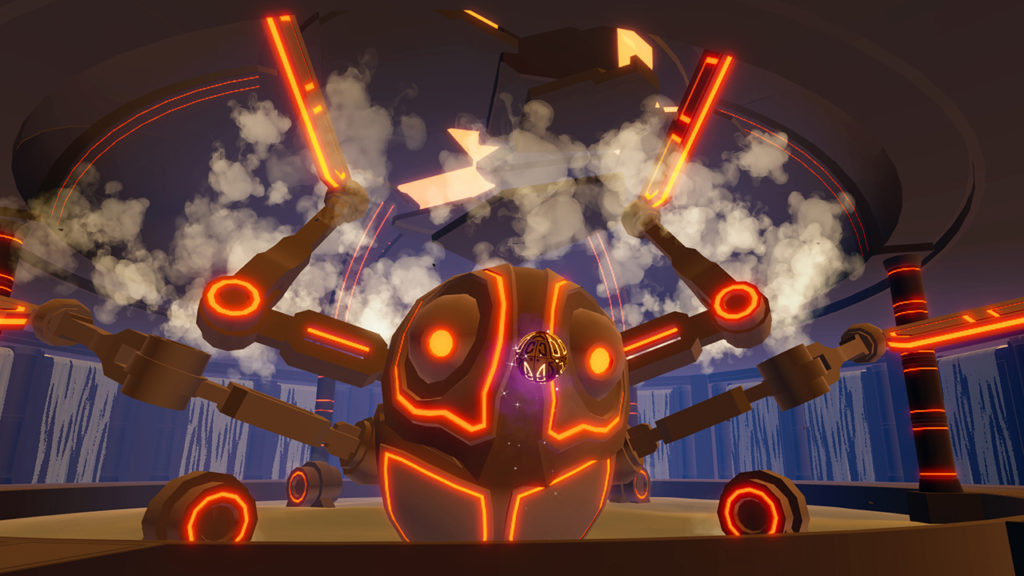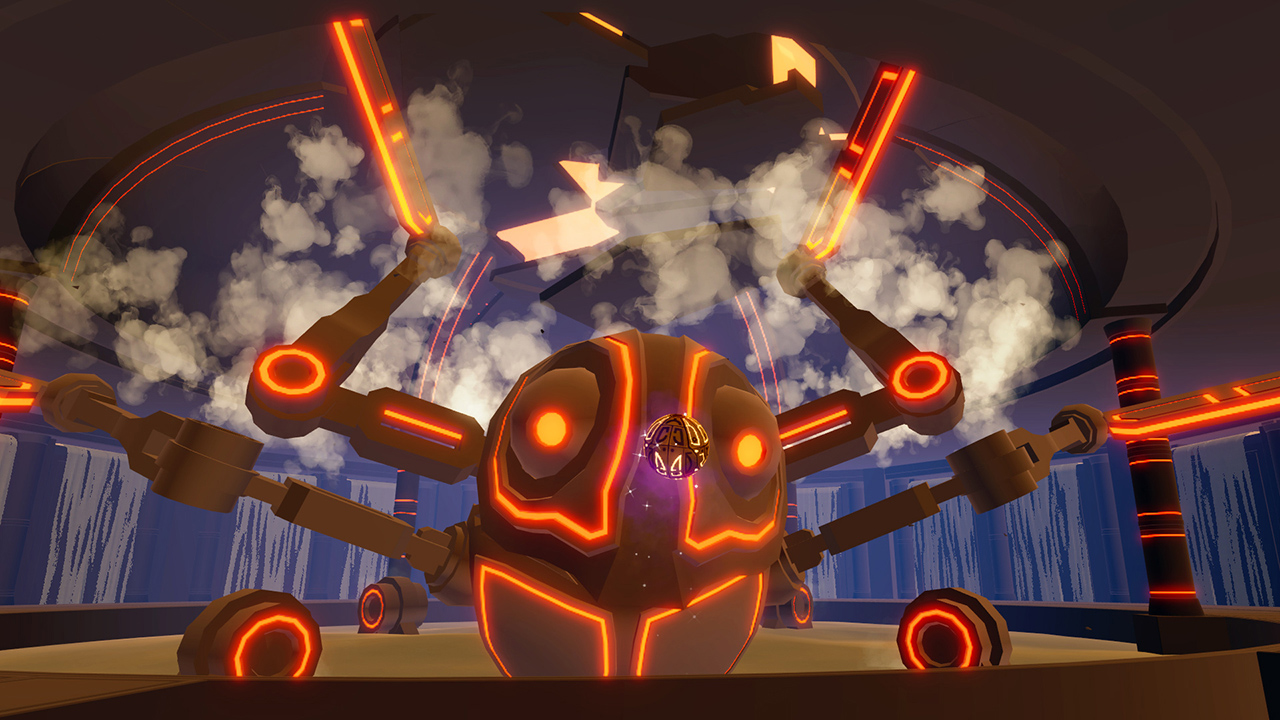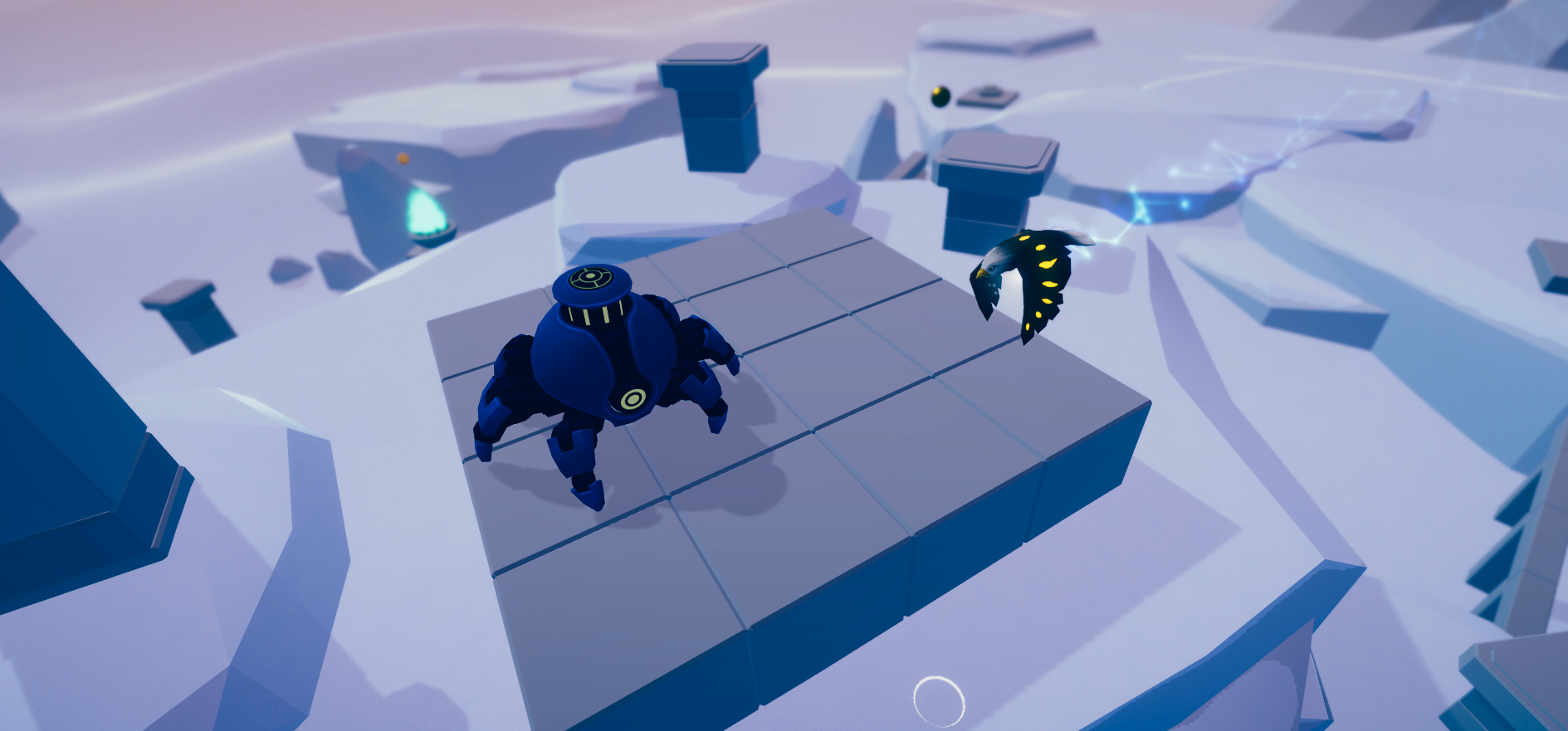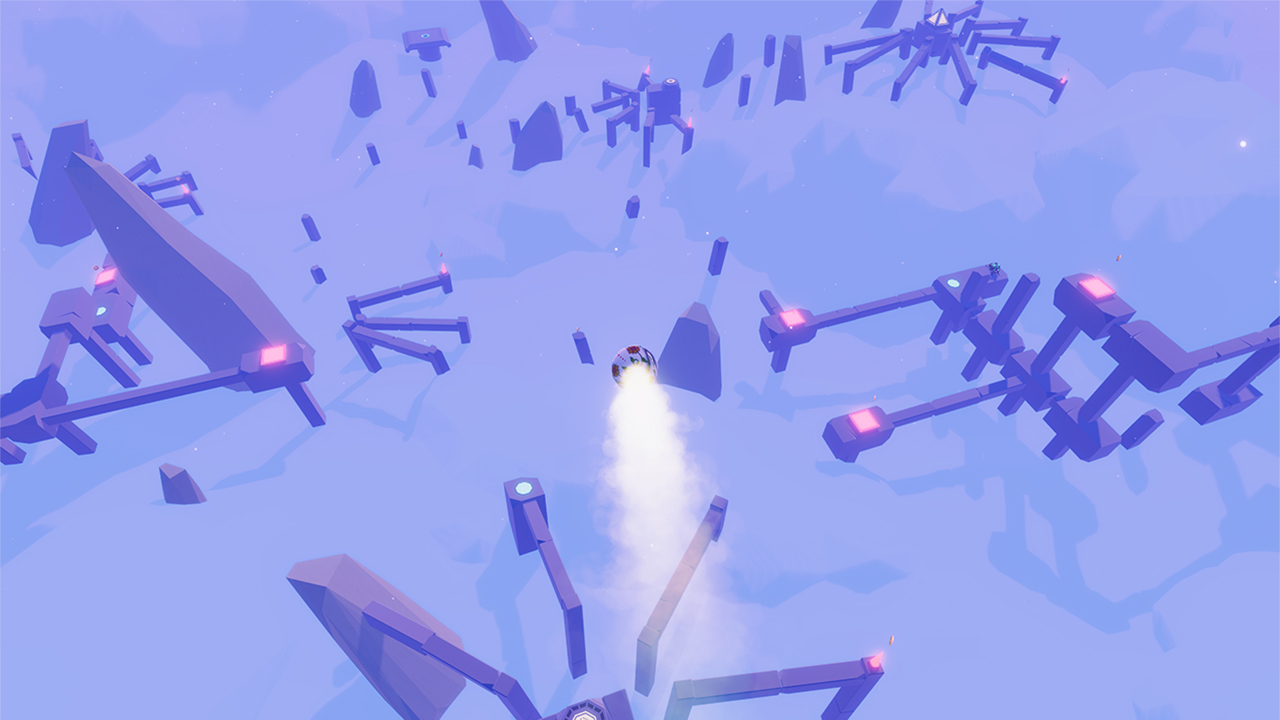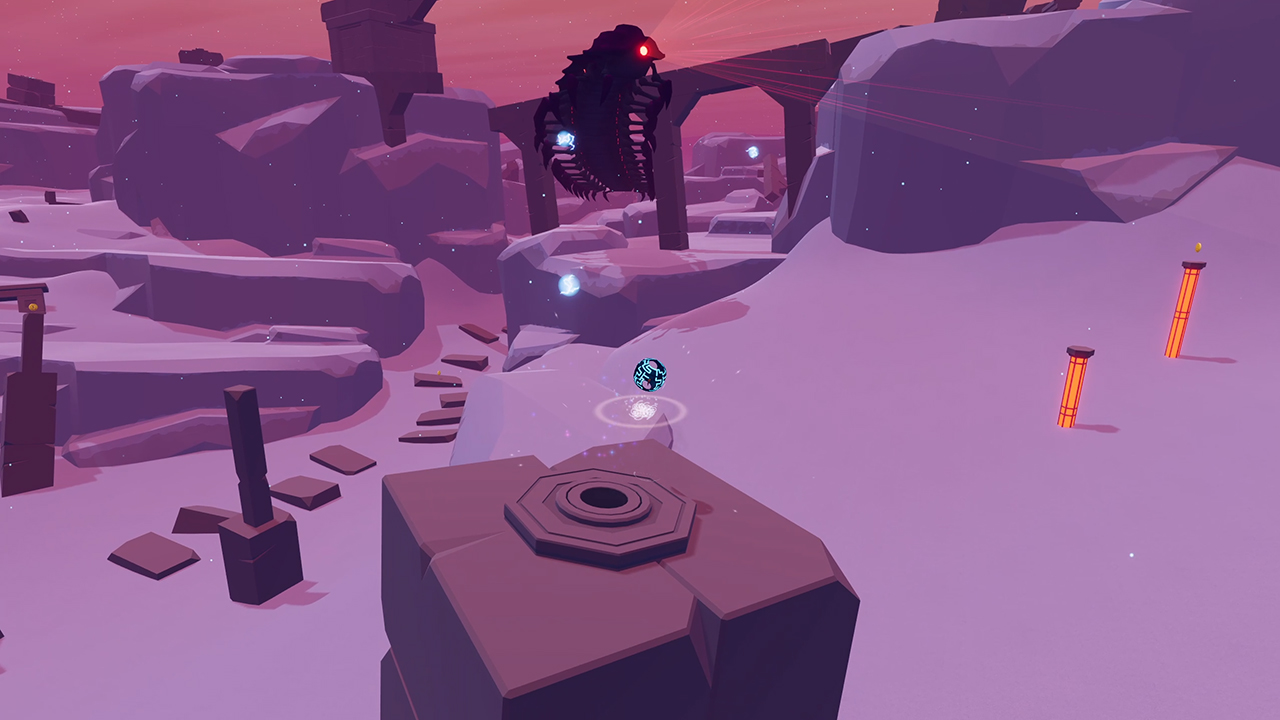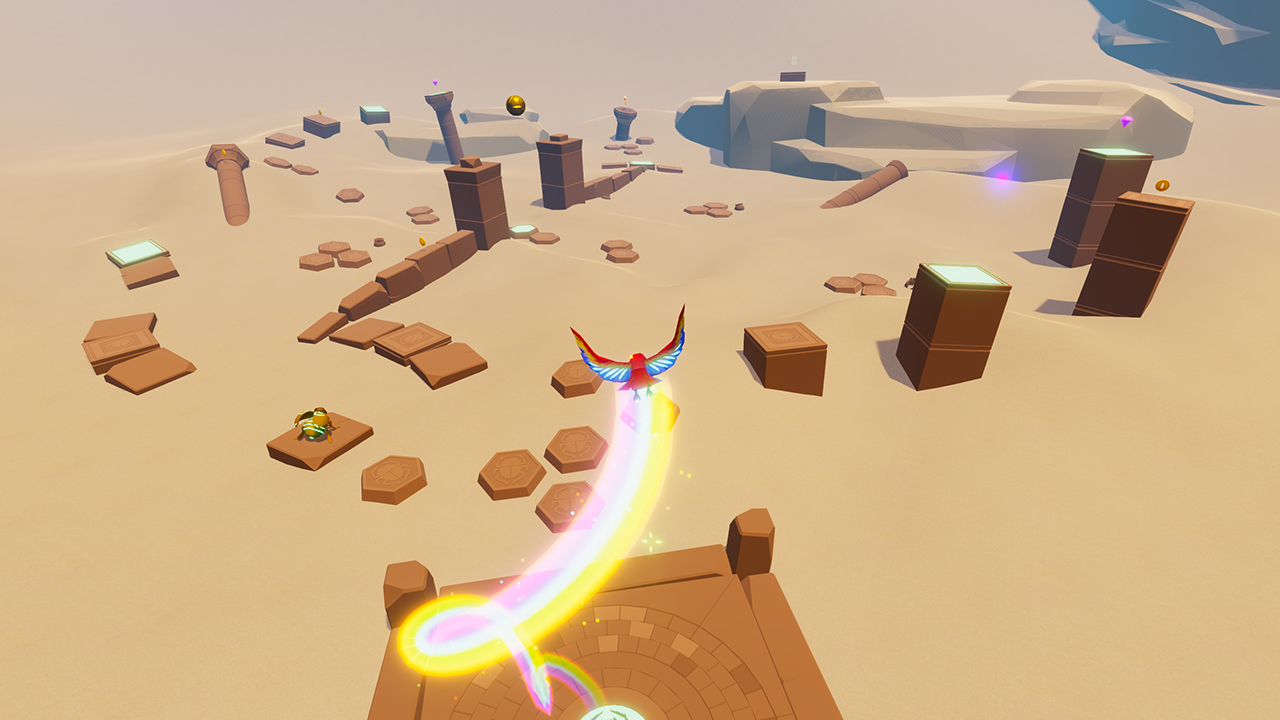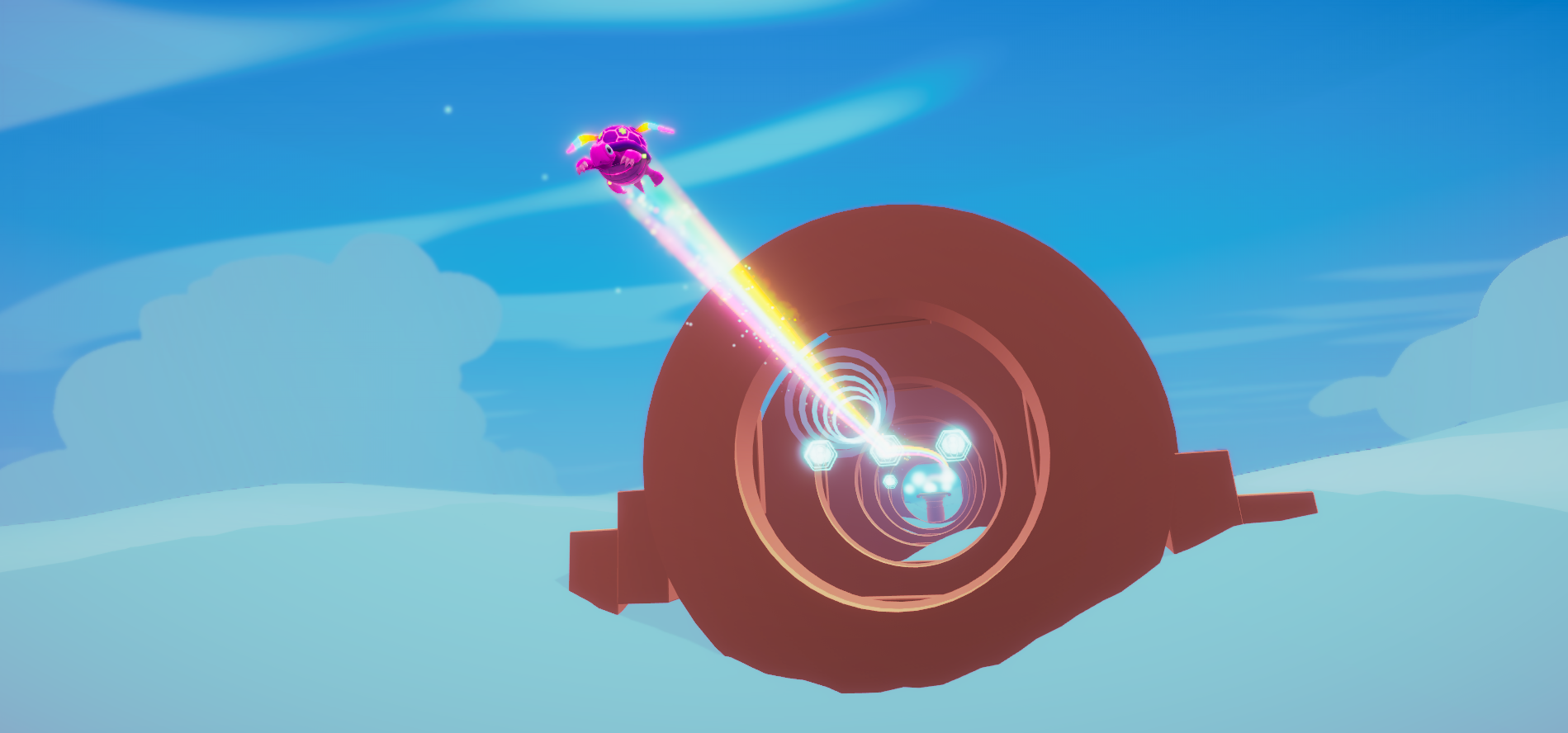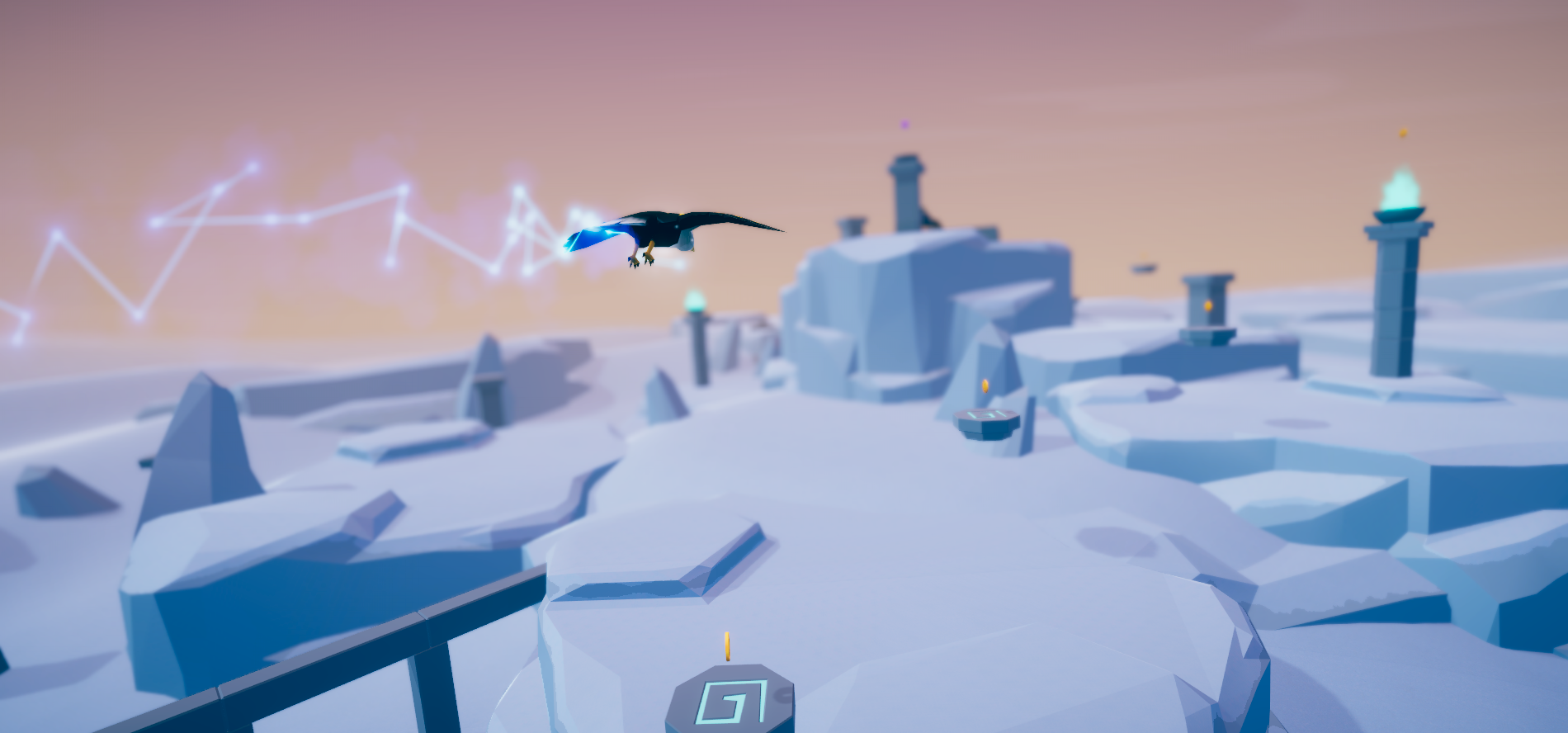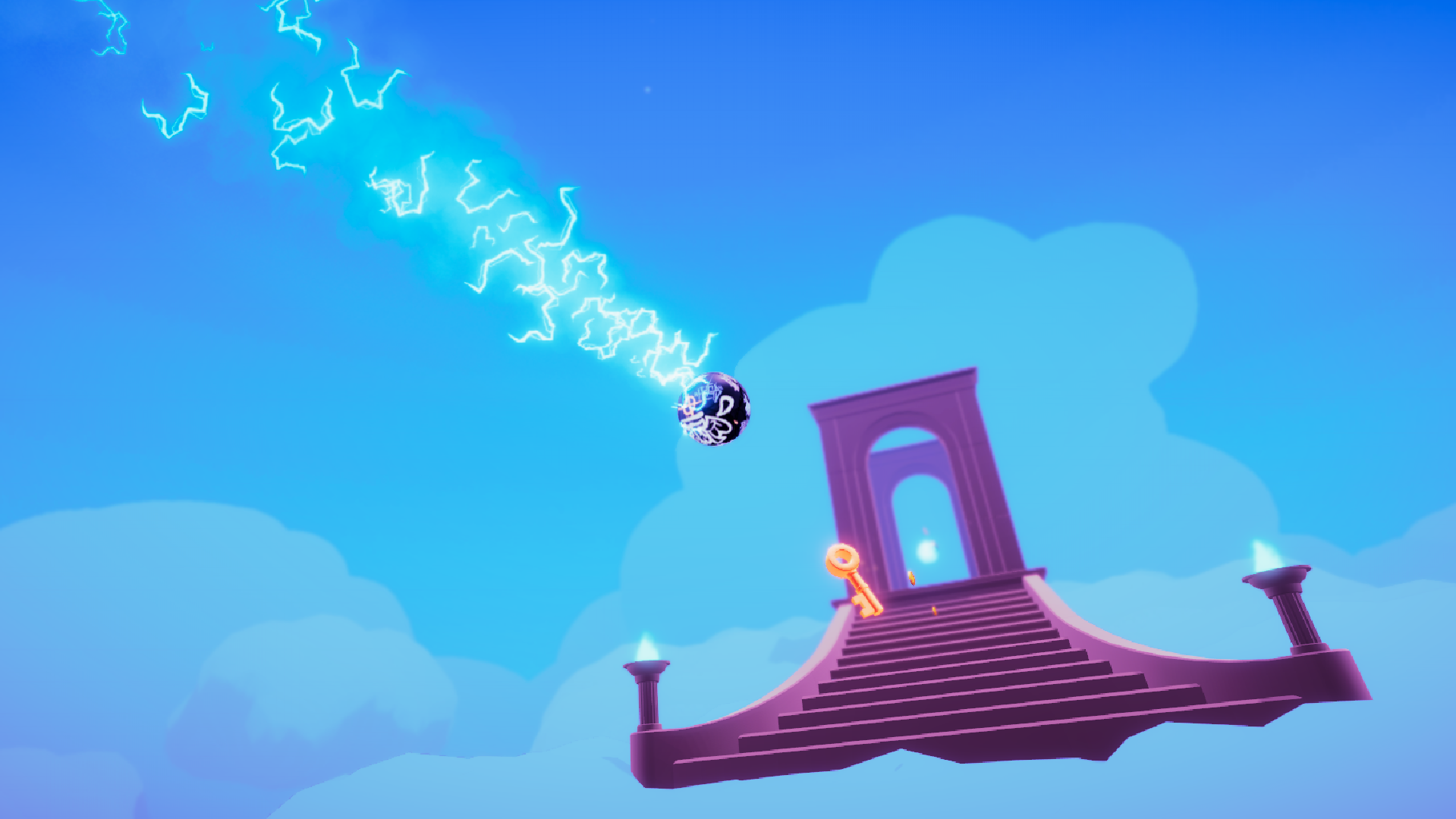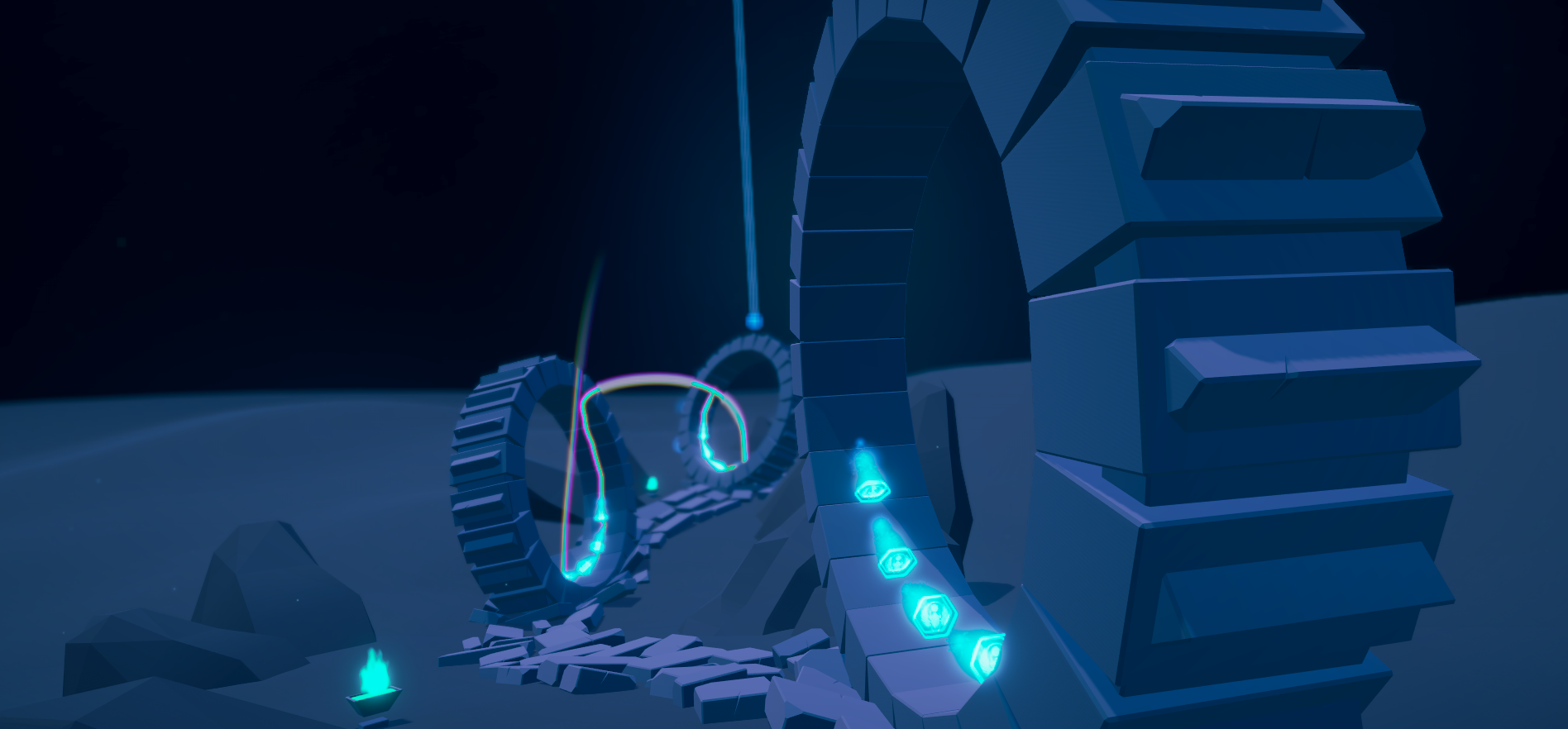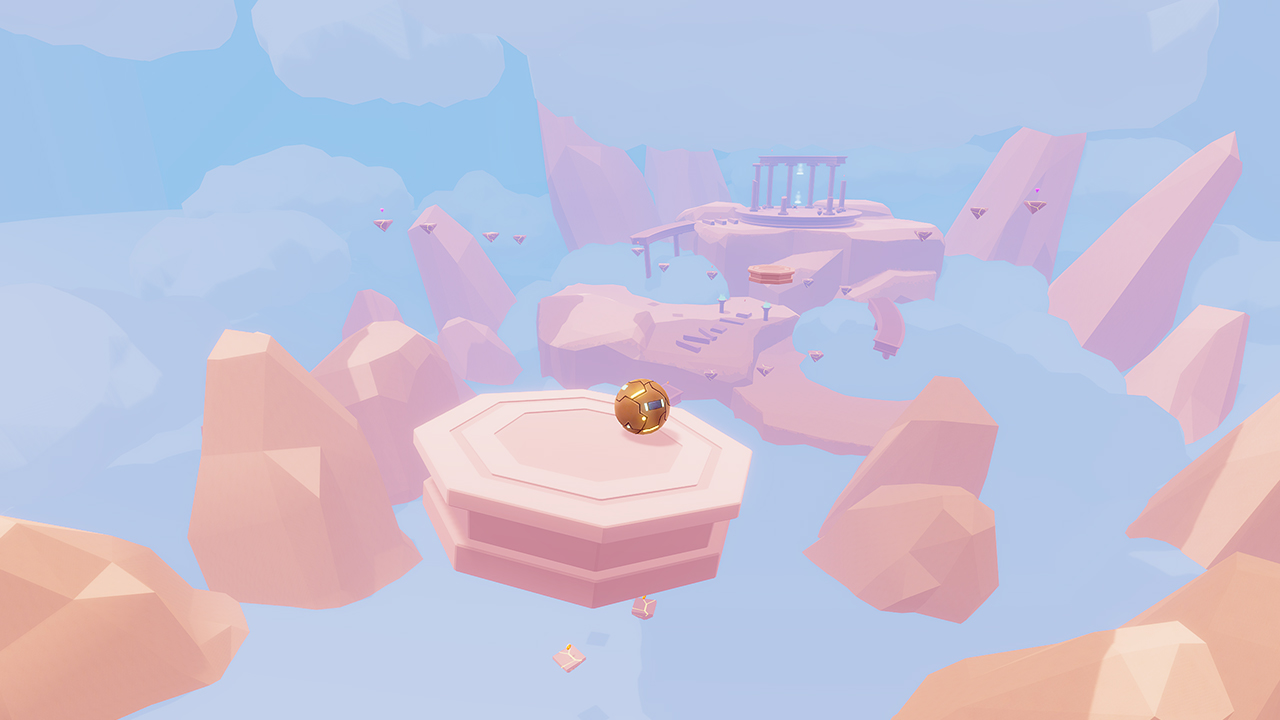Game: “Glyph”
Glyph

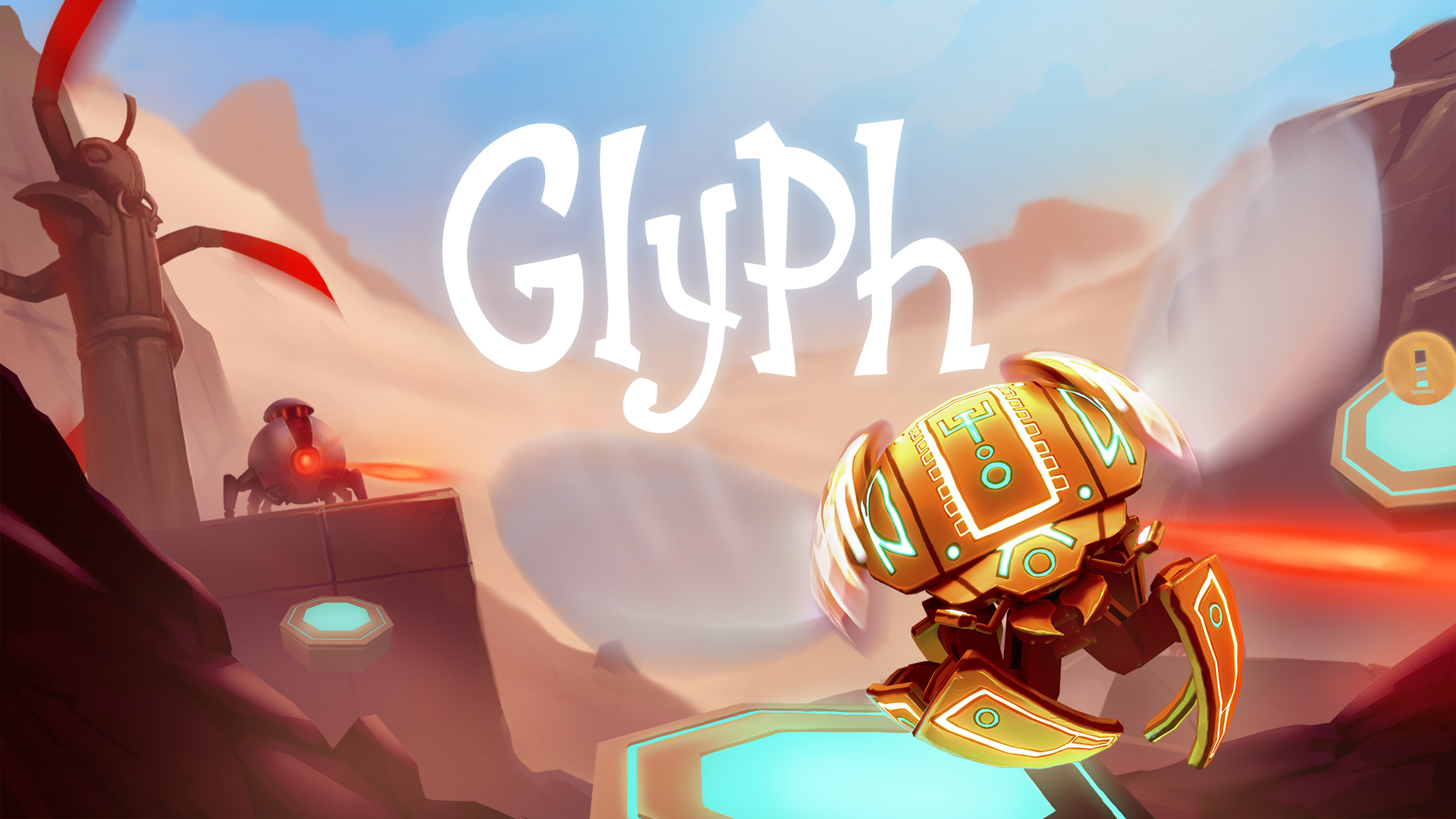
One of the things that I’m most attracted to about gaming is the sheer volume of different types of games out there and the medium’s ability to appeal to such a huge breadth of people. Some players might want to rampage through hordes of zombies and have bullets and limbs flying in an action packed gore-fest, while others want a text-based adventure that asks them how best to navigate the political intrigue of ancient Rome – and gaming is so diverse that it can legitimately accommodate just about every request in 2021. And while we’re definitely fans of hectic games that get your juices flowing, we equally enjoy a more laid back and soothing experience, and that’s exactly what we got when we picked up Bolverk Games’ chilled platformer Glyph, on Nintendo Switch.
At A Glance
| Scores | |
| Visuals | 7/10 |
| Sound | 7/10 |
| Gameplay | 7/10 |
| Overall | 7/10 |
| Positives | + Simple to learn, tricky to master |
| + Relaxing game play (assuming you don’t rush!) | |
| + Lovely ancient Egypt inspired environments | |
| Negatives | – Challenge level is limited in the exploration levels |
| – Huge difficulty spike in the time trial levels | |
| – Not a huge amount of variety in gameplay | |
| Launch Price | £17.99 |
| Our playtime | 5 hours 40 mins |
| Available on | Nintendo Switch, PC |
You play as the titular Glyph, a member of an almost extinct race of scarab-type creatures who get around by rolling up into a ball, Samus Aran-style. You’re awoken from a long slumber by your mentor and companion Anobi, and charged with healing your ancestral homelands that have been poisoned by an ancient calamity. Along the way you must collect coins and gems that help you resurrect the Lost Temple of Aaru and explore the various sites that your people used to call home.
From a gameplay perspective, Glyph asks you to navigate your little spherical buddy through a series of desert wastelands in what is effectively a videogame version of ‘the floor is lava’. You have to roll, bounce, and hover your way from platform to platform while ensuring not to land on the poisoned sand below, lest you explode and have to start again. To make things a little more tricky, you have to collect a number of keys that are scattered throughout each level, allowing you to unlock the exit portal that lets you proceed to the next level. There are a few different collectables strewn throughout the levels too; there’s scarab artefacts used to revive parts of the Lost Temple that acts as the level hub, coins that are required to open new levels, and gems that can be used to unlock the dedicated time trial levels. The most dedicated explorers will be rewarded with some nice aesthetic items for Glyph too, with a nice variety of collectable skins and contrails hidden in the most difficult to reach areas of each level.
There’s a number of tricks that you’ll have to master for you to hold any hope of progressing in the game, including a double-jump, a smash that allows you to bolt straight downwards onto a platform below you, and the ability to unfurl your scarab wings to hover in the air a little while in order to avoid the deadly sand below. The controls for these moves are all extremely simple and thankfully very responsive too, ensuring that you’re not left pulling your hair out when attempting some of the more precise sections of the game. Things aren’t exactly realistic from a physics perspective but they are incredibly consistent, and I felt that was definitely more important to the experience overall. It didn’t take me long to get a good feel for the movement, and I was able to judge distances and the trajectory of Glyph’s flight really accurately after just a few levels, making the game really easy to pick up while still requiring some practice to completely master.
Controls wise, the only minor gripe I did have lay with the camera, but even that is something rather nitpicky. The camera function that’s provided in the game is actually really solid – it can be rotated 360 degrees around the character, and to points entirely above or below Glyph too, and is easily controlled using the right analogue stick. But what I feel it’s missing is a button that allows you to toggle whether the camera follows behind the character so that you can always see where you were going. Giving the player full control of the camera is really useful in judging distances, but there were more than a few occasions when you needed to awkwardly flick the control stick in between button presses so that you could keep an eye on where you were going, making things trickier than they needed to be. In all honesty having another button to press might not have solved the issue and might have been just as fiddly to use, but since the controls are so tight, it was the only thing that stood out as being missing.
The levels themselves all have a similar aesthetic that’s heavily inspired by the vast sandy imagery of ancient Egypt. There are great stone columns jutting out of the dunes at every angle, and broken monoliths and shattered walkways that successfully evoke images of a once great civilisation that has been swallowed by time. The art direction takes a minimalist approach that really plays into the chilled nature of the game, with muted pastels making up the majority of the visuals, helping to ensure that nothing is too busy or distracting when you’re bouncing around the levels. And while I love the overall look of the game, I did sometimes find that the swathes of flat colour, with very little texture or shadowing, played tricks with my depth perception, and I had to rotate the camera to all sorts of strange angles to figure out exactly where Glyph was in relation to the ground or the platforms I was aiming for.
One of the parts of the game that I found really enjoyable was the amount of lore that Bolverk Games had crammed in, particularly considering the game contains only two characters and no real moments of active storytelling outside of the introduction to the game. I hadn’t expected any real energy to be invested into the wider universe for a puzzle-platformer where each level is standalone and just a few minutes long, but I was pleasantly surprised at how much I learned about the backstory throughout the game. While provided only as snippets of conversation with your companion Anobi, the pearls of history he passes on quickly pile up to paint a really well thought out picture of a working civilisation before disaster brought it to its knees. I was left thinking that I’d love to play a game set in the same universe, specifically a prequel, that allowed me to see the universe in full bloom.
Much like the visuals in Glyph, the sound too is a rather minimalist and limited affair, but I did find myself thoroughly enjoying what was on offer. The soundtrack has a twinkly, mystical feel that impresses the theme of rediscovery upon the player, and drives home the feeling that you’re walking where no-one else has tread in centuries. There’s a soothing quality to the music that definitely inspired me to play the game at a calmer pace than would be natural for me, and in slowing down, I have to admit that I found the bobbing around a rather relaxing experience, albeit one that does get a touch repetitive as the game goes on. The frustration came whenever I foolishly killed myself and began to rush through the parts of the level I’d already played in an attempt to ‘catch up’, inevitably leading to me making the same, or even more mistakes, that only ended in me putting down my Switch for five minutes while I cooled off!
But the frustration peaks with the aforementioned time trial levels, which are just brutally unforgiving in comparison to the rest of the game. I had read that other players had some struggles with these levels and cockily assumed that a man with my Super Monkey Ball tenure wouldn’t have any problems, but boy, was I brought back to earth with a bang! Requiring the perfect plan, exact timing on all of your jumps, and immaculate ricochets to achieve the gold on each stage, the time trial levels were infuriating to play through. I think that shaving a few seconds off of the hardest target times would have brought the trials much more in line with the difficulty level of the rest of the game, and allowed the majority of players an opportunity at fully completing the game. Alternatively, the trial levels might have been better received had they been added in a separate ‘Race Mode’, specifically designed for players who like to test themselves at breakneck speed rather than those seeking some serene puzzle-platforming.
Having finished the game and seen off the entertaining final boss, it made me feel that there was scope for more enemies to be introduced, where quick puzzle solving or simple accuracy were required to take them down without adding any more mechanics to the game. While I appreciate that it might have gone against the grain for the planned theme and feel that Bolverk Games wanted, the addition of a few sporadic bosses might have just given Glyph the touch of variety that it needed to go from a ‘Good’ game to a ‘Great’ one.
I thoroughly enjoyed my time exploring the broken landscapes of Glyph and resurrecting the ancient civilisation in the sand, and I’d definitely recommend it to players looking for something they can pick up and put down in small sittings. While it might be a little bit samey for some, I found it a charming experience that makes for a lovely change of pace in a genre often requiring pixel-perfect precision and outlandish reaction speeds. This time, just kick off your shoes, feel the poisoned sand between your toes, fire up your Switch and enjoy the ride.
In the interest of full disclosure, the publisher provided VGamingNews with a copy of the game in order to conduct this review.
Indie Game ‘Glyph’ Is Coming Soon To Steam, Also On Sale On Switch e-Shop
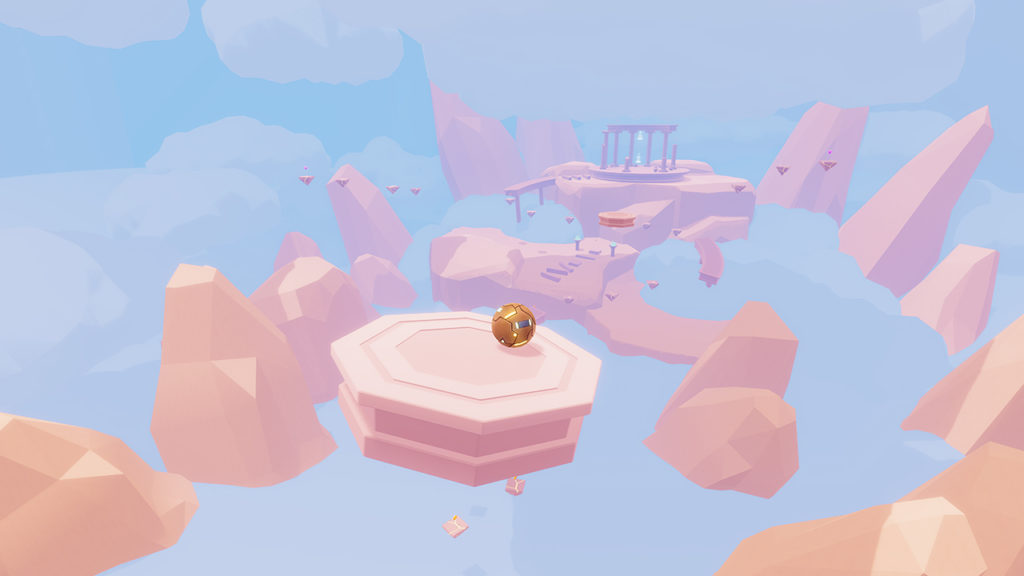
You’ll be forgiven for not hearing about Glyph. Originally releasing on the Nintendo e-Shop in January this puzzle platformer that looks like a cross between Journey and the morph ball from Metroid Prime, largely went unnoticed. That’s through no fault of the developers, but the Nintendo e-Shop has so many games available, sometimes gems are truly hidden. However, Danish developers Bolverk Games has a few announcements.
Read On

